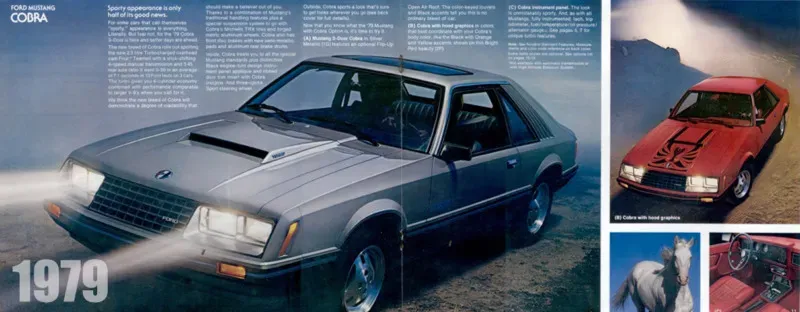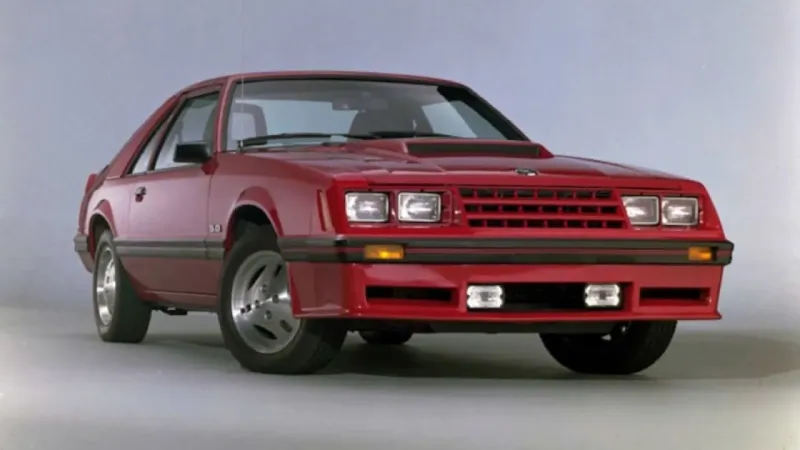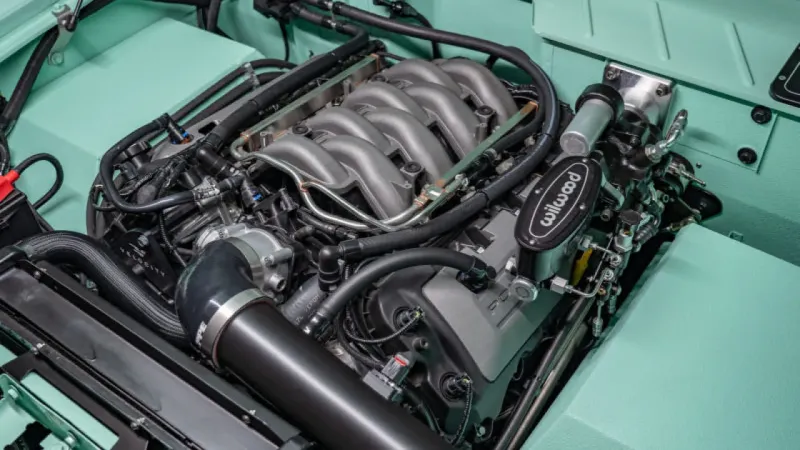Today’s modern performance engines seem to have lost their soul.
Sure, a turbocharged engine puts out preposterous amounts of horsepower while being remarkably efficient, but the sound and fury? It’s not even close to the way it used to be. At Velocity, we strive to mesh the energy and passion of old-school trucks like the Bronco or F-Series with today’s modern technology. Our Broncos, Scouts, and F-Series trucks all need to perform like a modern car, but give that spine-tingling sensation that only a classic ride can.
When choosing an engine for our Signature vintage Ford builds, we knew it needed to not only perform well, but be impeccably refined yet still give our clients that Americana roar that they expect in a proper classic. Luckily for us, Ford happens to have one of the greatest crate engines available on the market and it’s a perfect companion to our builds: the 5.0L Coyote V8.
Ford enthusiasts (especially Mustang owners) know that the 5.0 defines vintage performance, but how the modern version of this incredible engine came to be is a story worth telling.
5.0 Origin Story
Let’s just start off by setting the record straight: the 5.0 nomenclature made famous in 1979 was not really a 5.0 at all.
The 1979 Mustang had a 4.9L V8, or for your old school muscle heads out there, a 302 cubic inch unit. If that 302 number sticks out in your head, it’s because another legendary Ford product bore those iconic numbers in 1969 and 1970. Yes, we’re talking about the homologation special known as the Boss 302 Mustang. A vehicle that for all intents and purposes was a thinly disguised race car, released for the sole purpose of competing in the SCCA’s 1969 Trans Am series.
 1979 Ford Mustang – Credit
1979 Ford Mustang – CreditAfter the demise of the muscle car in the early 1970’s, the Mustang soldiered on as the Mustang II. The first time Ford bestowed the 5.0 moniker on the side of their famous pony car was in 1975, when they brought back the V8 after a four year hiatus. Even though it hammered out 5 liters of displacement, this sad 302 only made 122 horsepower due to emissions requirements of the day. Regardless, the people loved it and the Mustang was hot again.
Fox Body Power
Most muscle car fans know that the 5.0 GT is the true enthusiast choice, but back in 1979 when the fox body Mustang came out, Ford executives didn’t agree. The top brass at Ford wanted to cut the Mustang down to a front-wheel drive coupe with a Mazda chassis. While there’s nothing technically wrong with that, a front-wheel drive coupe is not a Mustang. Give me rear-wheel drive or give me death! Buyers indicated horror at the thought of a front-wheel pony car and the Mustang was bestowed not with a FWD platform, but the existing Ford Fox platform instead.
 1982 Ford Mustang GT 302 HO – Credit
1982 Ford Mustang GT 302 HO – CreditFord’s modular V8 took over for the 1996 model year, and that was the end of the 5.0. That is, until 2010, when Ford announced that the 5.0 was back but this time, it was about to crush the competition.
The Howl Of The Coyote
Ford’s Coyote has been around now for over ten years, but its design is still as good today as it was back in 2011.
To put it lightly, the Coyote is a modern powerhouse because of its advanced technology. It replaced the aging 3V modular, SOHC V8 and brought a brand-new 4V, dual-overhead cam design to the table. This meant the Coyote did not make power down low like Mustangs of yore, but that it made all its power up high in powerband. In other words, the Coyote was born to rev. As good as the base design is, Ford’s Ti-VCT or Twin Independent Variable Cam Timing is what really set the Coyote apart from other American V8 engines like the General Motors LS.
Much like VTEC on Honda motors, Ti-VCT allowed the Coyote to alter cam position and timing to achieve more power when needed and better fuel economy when power wasn’t needed. In addition , it also offered lower emissions, which is something challenging for any modern engine. The result of all this trickery was a stout 412 hp and 390 lb-ft of torque in the 2011 Mustang. Ford’s ubiquitous F-150 would also receive the Coyote as an option, albeit a Coyote tuned for more low and mid-range torque than top end power.
To the credit of Ford, the 5.0L Coyote’s deck height, and bore spacing matched the old 3V 4.6L V8. In addition, the bell housing bolt pattern was also kept from the old 4.6. This meant that Ford could produce the Coyote on the same assembly line as the old 4.6 modular engine, retaining the modular designation and allowing for future upgrades with relative ease.
Why We Chose The Coyote
As a builder of world class vintage Broncos, F-Series trucks and more, we needed an engine that was both powerful, and easy to work into a variety of applications. Now in its third generation, the Coyote is more flexible and powerful than ever. It provides a refined, torque rich character that produces ample power at nearly every RPM. Combining these good graces with our in-house dyno allows our engineers to dial in things like throttle response on every single vehicle that goes out the door.
 1973 Velocity Classic Bronco Coyote Engine
1973 Velocity Classic Bronco Coyote EngineChanneling the energy of past legends like the Boss 302 or the 5.0 GT Mustang fox body into a beautiful build is what we do every single day. Our vehicles may have a classic look but that Coyote under the hood, it’s about as modern as anything else on the road.
We think it’s the perfect engine for a modern classic.
